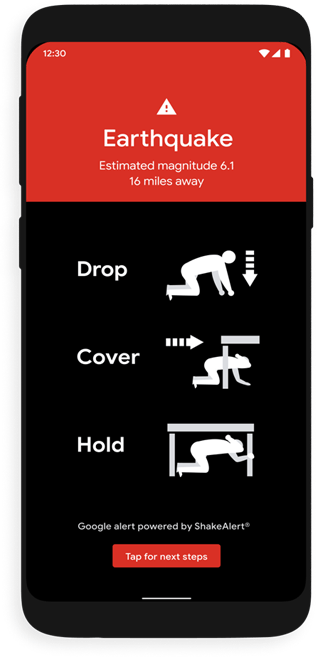Google has been known to collect a lot of data from users, wherever they are, and whenever possible.
Besides using user data to gather their interest and usage, Google can also gather users' location to also power Google Maps. With the many Android devices out there, Google can use users' location to help show traffic congestions in many roads around the world.
And this time, Google is stepping up that approach, by using Android devices' built-in accelerometers to detect earthquakes. Accelerometers are small, but are sensitive enough to sense earthquakes when some people cannot.
"They’re even sensitive enough to detect the P-wave, which is the first wave that comes out of an earthquake and is typically much less damaging than the S-wave which comes afterward."
Through the sensors, Android 5 Lollipop and above can detect the seismic wave activities and report directly to Google.
Initially, users in California are getting the feature directly to their phones starting August 11.
"We call this the Android Earthquake Alerting System," Google said.
The system works like this:
Google collects users accelerometer readings, and pool them together. If Google sees that a lot of people in a certain area are experiencing some unusual movement at the same time, Google can use that data to populate its Google Search results page with accurate reports.
So for example, if users feel an earthquake and start wondering, they can Google “earthquake” or “earthquake near me,” and Google will pick up users' location and see whether or not they were data about an earthquake has have recently been gathered from other Android users in that location, along with resources on what to do after an earthquake.
This is the first step of the system's implementation.
The second step is to make Google to use that data to directly warn other Android users in the area near the earthquake epicenter, by showing a red earthquake alert with suggestions to "drop, cover, and hold."
"We’re essentially racing the speed of light (which is roughly the speed at which signals from a phone travel) against the speed of an earthquake," said Google

With the approach, people in the earthquake area can be alerted as soon as the first strike nearby is acknowledged by Google's system. This way, people can have a bit of notice before they feel any shaking.
"Each phone is able to detect that something like an earthquake is happening, but then you need an aggregate of phones to know that for sure that it’s an earthquake happening,” explained Marc Stogaitis, principle Android software engineer at Google.
To make this happen, Google uses the ShakeAlert notification from the U.S. Geological Survey to notify Californians about a recently detected quake. What this means, users in California are not anymore required to have a separate ShakeAlert-powered pp installed on their phone to be notified.
And besides using users' accelerometer data, Google is also using information from the United States Geological Survey (USGS) ground motion sensors.
These notifications are similar to those sent by the MyShake app or Los Angeles County's ShakeAlertLA.
Google expects to expand the automatic alerts to Android users in other states and countries in the coming year.
To roll out this feature, Google uses Google Mobile Services, so users won't have to do a full operating system update to use it.
"With the growing cost of natural disasters worldwide, we saw an opportunity to use Android to provide people with timely, helpful earthquake information when they search, as well as a few seconds warning to get themselves and their loved ones to safety if needed," said Google in a blog post.
With the approach, Google is creating a worldwide, Android phone-powered earthquake alert system.
But before users can contribute their phone location and accelerometer data to power Google's earthquake detection system, they must first opt in.
“Basically, there are hundreds of millions of people around the world that live near earthquake fault zones,” Stogaitis says, “and that’s something that we think we can help with.”
Once Google has more confidence in the accuracy of the system using the first step and the second step, Google plans to begin actively sending out earthquake warnings to people who live in areas where there are no seismometer-based warning systems available.
At the time of the introduction, Google didn't provide information about any quake thresholds it has put in place.
It should be noted that there has been considerable debate about when people should be warned when an earthquake occurs. If the threshold is too low, it may create unnecessary panic, but setting it too high, damage can start happening before people receive any warning.
According to UC Berkeley researchers who developed the MyShake app, most smartphones' sensors can record 5.0 earthquakes or above within roughly six miles of the earthquake's epicenter.